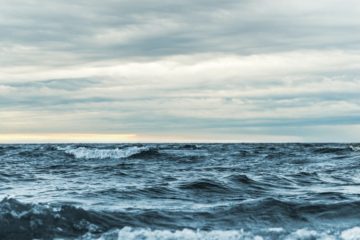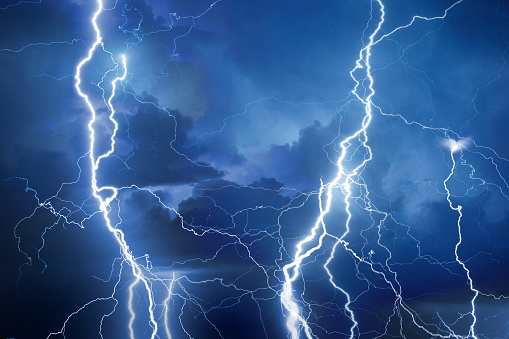Boating in Foul Weather
Boating in Foul Weather
Boating in foul weather and rough seas can be a dangerous combination when out on the water.
As careful as you might be, bad weather can still take you by surprise.
In the summer boating season, heat waves bring high-pressure fronts and can bring on storms unexpectedly. These conditions can mean the difference between
There are worse things that can happen to you than getting seasick—especially since you already know how to prevent and cure a wobbly stomach.
The good news is there are steps you can take to make sure you’re not heading straight into the mouth of a storm. And there are steps you can take to stay safe when you’re not in an ideal boating situation.
We’ll help you prevent serious problems posed by rough seas here. In addition to reading this post, you’ll also need to learn about safety considerations such as basic boating navigation and keeping essential safety items on board.
Tips for Boating in Rough Seas
Pay Attention
Check the forecast before venturing out (and use common sense)
A good boater knows to always check the weather forecast before leaving the dock. Cloud formations and wind conditions will tell you a lot (if you know how to read them).
Back in the old days, there was nothing but the local radio. If you weren’t listening to the local radio broadcast continuously, you might have found yourself in trouble. Nowadays, we have smartphones that chime a push notification for severe weather alerts.
But let’s say your phone dies or you lose a cell signal. It’s a good idea to have a backup cell battery or battery charger, but even that’s not enough. Our cell phones aren’t invincible. They die from overheating, and they die from playing our music all day and, heck, we even drop them in the water and lose them from time to time. Don’t rely on only a smartphone!
Instead, take a hand crank transmitter radio to listen for weather conditions. You’ll never need to worry about dead batteries or battery corrosion.
Wear foul weather gear and PFDs
If you’re experiencing heavy seas, be sure to put on lifejackets and USCG-approved PFDs. All it would take is to hit a wave at the wrong angle to send passengers flying overboard. Having an overboard passenger can be avoided by having passengers sit in the center and the lowest part of the boat.
And while I’m on the subject, invest in some foul weather gear. In bad weather conditions, cold rains and winds can frequently leave passengers soaking wet and chilled to the bone, resulting in hypothermia. Invest in hooded raincoats or ponchos, any clothing that’s moisture-wicking and quick-drying. Wear multiple layers or an extra set of clothes. The key is making sure to cover your head, which releases the most heat.
Slow down and turn on navigational lights for visibility
Slow and maintain your vessel’s speed! To lessen the impact of swells, you may also need to angle it at 45 degrees. Even if you’re not headed directly toward your destination, it’s the safest route.
When slowing down, ask passengers to provide an extra pair of eyes, alerting you of nearby boats and even debris. Debris is common today with the high waters. Even if you have 20/20 vision yourself, nearby boaters may not! Bad weather can bring torrential downpours and thick fogs, so it’s important to reduce speeds and keep a lookout.
Turn on your navigation lights!
These aren’t only for nighttime navigation. They’re also there for foggy conditions and foul weather. It allows boaters to see your vessel’s bow and stern and the direction you are moving in.
Disconnect electrical equipment
If the storm has brought lightning with it, you need to disconnect all-electric equipment. And obviously, don’t touch anything metal!
Wear Proper PFD’s and Have Enough Fuel
You should have a boat emergency kit and specific life-saving safety equipment at all times. When in rough seas, that’s the time you should be breaking certain items out of lockers or bags to have them close by. It would be best if you did the following:
- Have horns and signaling devices on hand.
- Turn on your VHF marine radio and set it to international distress channel 16.
- Prepare an anchor if you lose motor maneuverability near shallow water, rocks, or otherwise dangerous shores.
- Take out the bailer bucket in case you have water breaching and spillage.
Lastly, grab the Dramamine. If you have a pretty strong constitution and can handle rough seas, that’s great! Remember, even strong stomachs can’t hack some monster swells’ or choppiness. How about your passengers? Which is better – Dramamine or having a sick passenger in your boat?
Change course to find calmer conditions.
If you have an app or a way to check a Doppler radar, you could keep out of the storm’s path. If you can’t do so, seek shelter in other ways to find calmer conditions. Coves or even a stranger’s dock can act as shields or a wind barrier in a pinch.
Some boaters are afraid to go near bridges if there’s lightning. But the reasoning behind this fails into another way of thinking: If lightning strikes the bridge you’re under—with already small odds—it will travel in each direction along the bridge back to land. If it’s a severe enough storm—I’ll take those odds!
Run With the Swells
Take care in the trough of the waves.
If you find yourself caught in the lower parts of the swells, riding the trough—take caution! Riding in the trough will begin rocking your boat and could potentially cause it to roll. Riding parallel with waves may not aim you in the direction you need to go, and it will take you a lot longer to get home, but it’s considered the safest path.
You might find more stability with a 45-degree angle inside the trough, too.
Be careful when outrunning the swells.
Sometimes you can outrun the waves by riding the crests, but it’s a fine line. Just remember: Whether it’s the wave or your vessel—what goes up, must come down!
Running ahead of the waves is tricky and can often result in broaching, which means you crash into the wave ahead—usually from too much speed on your part—resulting in the wave behind pushing the vessel sideways along the trough instead. And a sharp turnabout of broaching can lead to capsizing!
When heaving-to is your only option.
If all else fails, the swells are high, and your vessel is being tossed around so much you feel like you’re not getting anywhere, don’t fight against it. Just ride the storm out.
For this, there’s only one technique you need: Aim the bow into the swells and wind as much as you can. You don’t want the waves hitting the hull any harder than necessary. This way, the bow will cut through the waves and ease the impact (and your stomach).
You also might need to heave to if you’re short on fuel. When heaving-to, you can deploy an anchor and use minimal power for steering to conserve the fuel you have left to make it back to land when the storm lets up.
Take a Boating Class and Get Practice
Boating in rough seas relies on knowing how to operate your boat safely. Some of the techniques listed above are maneuvers you can practice on calmer waters to become more prepared. Still, the best option I can recommend is to sign up for a USCG Auxiliary Boating class (or two). Suggested courses are Weather & Boating or a well-rounded Boating Skills and Seamanship course.
Human error causes most accidents on the water. The more comfortable you feel handling your vessel, the easier it will be to maneuver in rough seas.
Stay safe and calm, and it’ll be smooth boating – no matter the weather!








